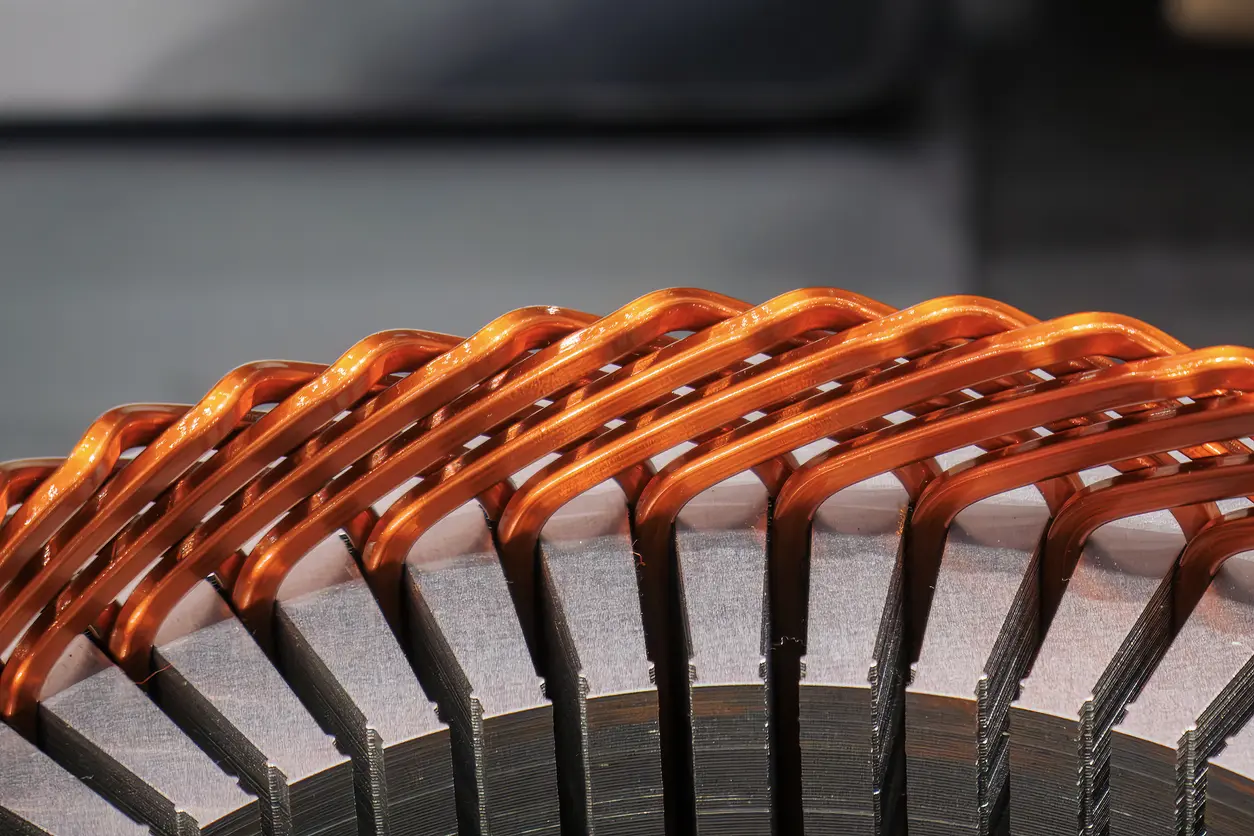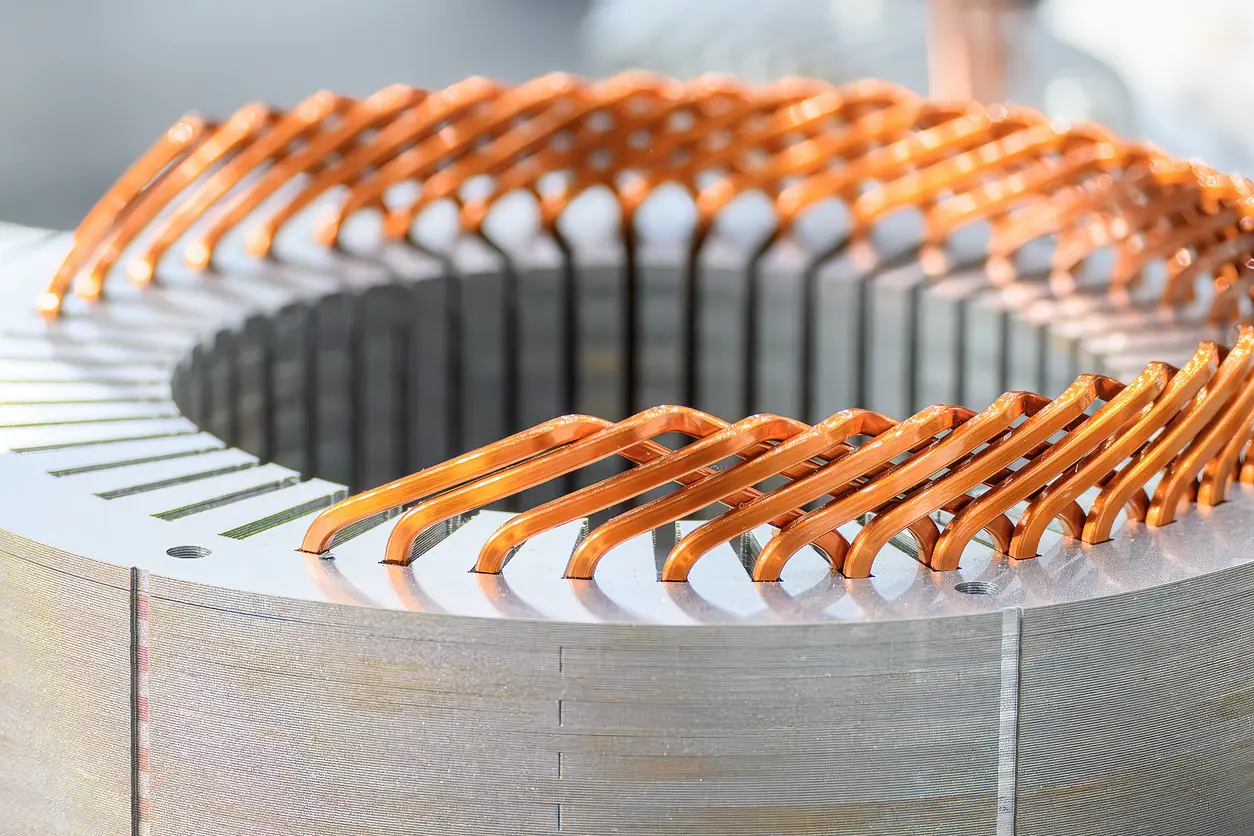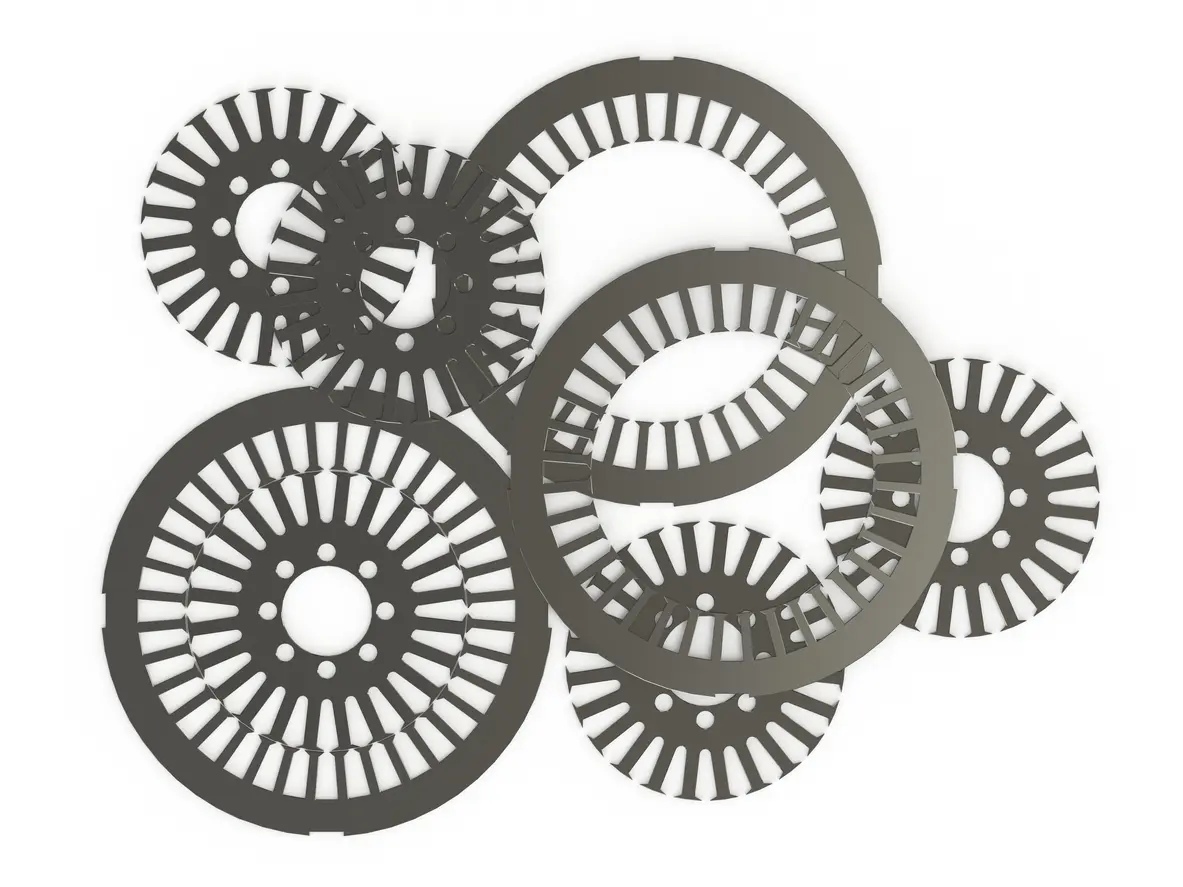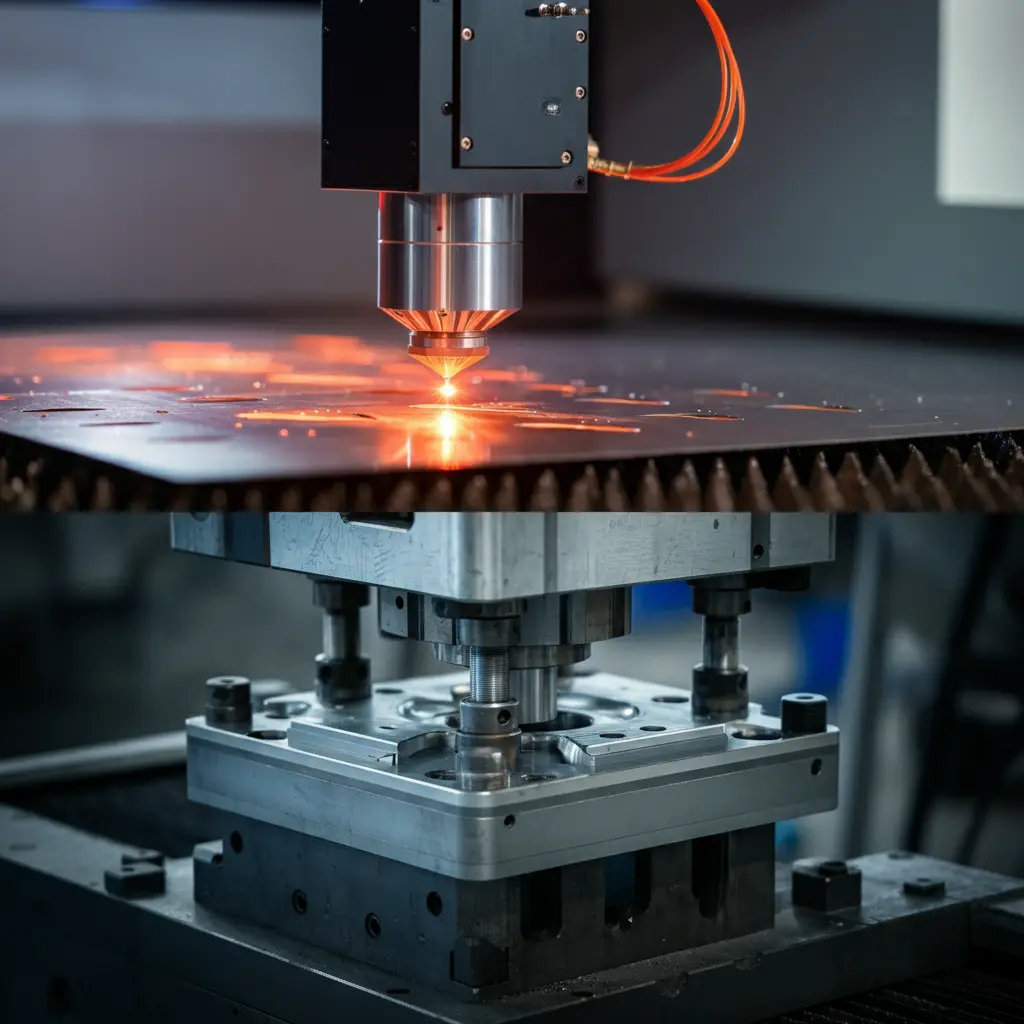1. Introduction to Servo Motor Core Assembly
1.1 What Is a Servo Motor Core Assembly?
A Servo motor core assembly is the foundational component of a servo motor—a precise, closed-loop system frequently used in applications requiring accurate control of angular or linear position, velocity, and acceleration. At the heart of this assembly are the lamination stacks, typically manufactured from specialized electrical steel that minimizes energy loss. These thin, layered sheets are carefully arranged and bonded to form the core, providing the necessary magnetic pathway that contributes to the motor’s torque and efficiency.
While servo motors might appear similar to other motor types, the servo motor core assembly distinguishes itself through its emphasis on precision and responsiveness. A robust core design helps reduce hysteresis, eddy current losses, and other inefficiencies, ensuring stable performance even under dynamic load changes. When combined with an appropriate rotor, stator windings, and feedback systems such as encoders, the servo motor achieves exceptional control capabilities.
1.2 The Growing Demand for High-Performance Servo Motors
Industries such as robotics, automation, and aerospace have fueled an increasing demand for servo motors that deliver reliable and efficient performance. Whether it is positioning robotic arms in a manufacturing facility or controlling flight surfaces in advanced unmanned systems, these applications rely on motors capable of swift, precise movements. Consequently, the servo motor core assembly has taken center stage, with manufacturers seeking ways to enhance its durability and optimize its magnetic properties.
Beyond traditional industrial robotics, consumer electronics and electric vehicles are also contributing to this growth. These markets call for motors that occupy minimal space while still meeting demanding torque and speed requirements. As companies innovate to stay competitive, attention has shifted toward more sophisticated core lamination materials and advanced assembly techniques. The result is a new wave of servo motor solutions that balance efficiency, thermal management, and compactness—making high-performance servo motors an increasingly integral part of modern technological progress.

2. Benefit #1: Enhanced Energy Efficiency
2.1 Lower Operating Costs
A primary advantage of a high-quality Servo Motor Core assembly is its potential to reduce overall energy consumption. By minimizing magnetic losses and ensuring a more efficient transfer of electromagnetic energy, these assemblies can help drive down electricity costs over the lifetime of the motor. Although the exact financial impact depends on factors like load profiles, duty cycles, and system configuration, organizations often observe measurable savings when adopting advanced lamination materials and well-structured motor core designs. Moreover, even a modest improvement in efficiency can add up significantly in large-scale operations where numerous servo motors run continuously. This approach is not only cost-effective but also supports corporate sustainability efforts.
2.2 Minimized Heat and Power Losses
In addition to operational savings, a carefully engineered Servo Motor Core assembly helps minimize both heat generation and power losses during operation. Reduced core losses—such as eddy current and hysteresis losses—translate into less wasted energy and lower thermal buildup. Because excessive heat can degrade motor components and impact performance over time, maintaining an optimal temperature profile is crucial for reliability. By selecting premium-grade electrical steel and ensuring precise lamination stacking, manufacturers can design motors that operate more efficiently under various load conditions. While results may vary across different applications, improved thermal management typically prolongs the service life of the motor and reduces unplanned maintenance or downtime.
Taken together, these factors underline the value of investing in a Servo Motor Core assembly designed with energy efficiency in mind. Although the up-front costs for higher-grade materials and manufacturing processes can be slightly higher, the long-term benefits—ranging from reduced power consumption to extended motor lifespan—often justify the initial investment. By balancing performance and durability, energy-efficient servo motors can make a significant impact on both operational costs and overall sustainability.
3. Unmatched Precision and Performance
3.1 Delivering Consistent Torque Output
A well-optimized servo motor core assembly is a key factor in achieving consistent torque across a range of operating conditions. By prioritizing the geometry and quality of lamination stacks, manufacturers effectively reduce hysteresis and eddy current losses, mitigating torque fluctuations. This stability is crucial for high-precision applications, such as CNC machinery, robotic arms, and printing systems. Although torque performance may also depend on load variations, feedback system calibration, and winding configurations, a robust core assembly forms the foundation for uniform motion profiles. This translates to enhanced product quality, fewer production errors, and a more reliable production process.
3.2 Enhancing Speed Control and Responsiveness
A high-quality servo motor core assembly not only ensures consistent torque but also significantly improves speed control and responsiveness. By leveraging advanced lamination stacking techniques and high-grade electrical steel, manufacturers achieve optimized magnetic flux distribution. This enables motors to respond quickly to commands, a critical capability in applications requiring rapid acceleration or deceleration, such as automated packaging or high-speed pick-and-place operations.
Additionally, precise assembly methods can reduce the motor’s moment of inertia, facilitating smoother transitions between speed changes. While overall performance may vary based on system architecture and tuning, a well-designed core assembly helps establish stable velocity profiles, improved repeatability, and reliable functionality even under demanding conditions. These features ultimately contribute to fewer production delays, greater throughput, and higher-quality output.
4. Benefit #3: Enhanced Thermal Management and Durability
4.1 Efficient Heat Dissipation
A thoughtfully designed servo motor core assembly can greatly contribute to improved thermal management by efficiently channeling heat away from critical components. By selecting premium-grade electrical steel and applying advanced lamination techniques, manufacturers strive to reduce core losses and maintain lower operating temperatures. Although results may vary depending on motor size and load, enhanced heat dissipation often translates into more stable performance during periods of high demand. This balance can help protect other motor parts, such as windings and bearings, from premature wear caused by excessive heat.
4.2 Robust Construction for Longer Service Life
Beyond managing heat, a durable servo motor core assembly is pivotal for extending a motor’s overall service life. Factors like lamination thickness, bonding methods, and precise assembly tolerances contribute to mechanical stability, reducing vibrations and stress on internal components. While operational conditions can still influence longevity, investing in a robust core assembly is widely seen as an effective way to promote reliability under challenging workloads. Ultimately, combining efficient thermal management with structural integrity can help minimize maintenance intervals and lower the risk of unexpected breakdowns, giving users greater confidence in the motor’s long-term performance.
5. Key Considerations When Selecting a High-Performance Servo Motor Core Assembly
5.1 Material Quality and Lamination Selection
When it comes to choosing a servo motor core assembly, the quality of the electrical steel and the thickness of the laminations can have a considerable influence on performance. High-grade materials tend to reduce eddy current losses and improve overall magnetic efficiency, which can lead to better torque response and lower operating temperatures.
Although industry standards provide guidelines for lamination thickness, it is often beneficial to work with suppliers who can tailor these specifications to a particular project. By carefully selecting the right material composition, one can strike a balance between performance and cost-effectiveness, thereby ensuring a more reliable motor for various applications.

5.2 Manufacturing Expertise and Precision
Another key factor involves the precision of the manufacturing process for the servo motor core assembly. Even small deviations in lamination stacking can result in uneven magnetic fields, leading to undesirable torque ripple or heat concentrations. Many manufacturers use advanced machinery to achieve precise tolerances, helping to ensure each layer aligns properly.
Automated assembly methods, coupled with rigorous quality checks, can help maintain the consistency needed for high-performance motors. While it may be tempting to seek the lowest-cost option, partnering with a manufacturer known for consistent precision could yield long-term benefits in the form of fewer mechanical issues and reduced downtime.
5.3 Customization and Application-Specific Designs
Finally, it is prudent to consider how the servo motor core assembly might be adapted to meet unique operational requirements. Industries such as robotics, medical equipment, and aerospace often demand specialized geometries or bespoke configurations. Whether it involves tighter fitment within a constrained space or the ability to handle unusual load profiles, customization can contribute meaningfully to overall system performance.
Collaboration with an experienced engineering team can also help in identifying potential design optimizations—whether through refined lamination layouts, alternative bonding methods, or specific surface coatings. Although customization may increase initial costs, it often proves valuable by enhancing reliability and ensuring that the motor precisely meets the intended application parameters.
Further Reading:
https://www.geeksforgeeks.org/servo-motor/





